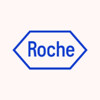
A Dose-Finding and Exploratory Study of RO5323441 in Combination With Sorafenib in Patients With...
CarcinomaHepatocellularThis open-label study will assess the safety, efficacy and pharmacokinetics of RO5323441 in combination with sorafenib in patients with advanced or metastatic hepatocellular carcinoma previously untreated with systemic therapy. In the dose-finding Part I, cohorts of patients will receive escalating doses of RO5323441 intravenously (iv) every 2 weeks in combination with sorafenib 400 mg orally twice daily. In the exploratory Part II, patients will be randomized to receive either the previously established dose of RO5323441 iv every 2 weeks plus continuous oral sorafenib or sorafenib alone. Anticipated time on study treatment is until disease progression or unacceptable toxicity occurs. For patients in the sorafenib arm with disease progression crossover to combination treatment with RO5323441 will be allowed.

Axitinib as Second-line Treatment for Advanced Hepatocellular Carcinoma
Hepatocellular CarcinomaThis is a phase II study of axitinib as the second-line on the treatment of advanced hepatocellular carcinoma (HCC). The purpose of this study is a proof-of-concept study to see if axitinib has any anti-tumor effect in HCC. The primary endpoint is disease stabilization that lasts for at least 8 weeks without progression of tumor-related symptoms.

Optimal Treatment on Hepatocellular Carcinoma (HCC) With Cirrhotic Portal Hypertension
Hepatocellular Carcinoma(HCC)Cirrhotic Portal HypertensionThere is no consensus about the optimal treatment of hepatocellular carcinoma (HCC) with cirrhotic portal hypertension, While this group of patients are classified as hepatectomy contraindication according to guidelines from National Comprehensive Cancer Network (NCCN) and American Association for the Study of Liver Diseases (AASLD). With improvement of surgical technique, preoperative evaluation, and perioperative management,especially the Precise Hepatectomy Technique, more and more studies confirmed the safety of surgical intervention to hepatocellular carcinoma (HCC) patients with cirrhotic portal hypertension.However, most of the previous studies were either retrospective or with small samples. The investigators project is a prospective randomized controlled trial, planning to compare the safety, efficacy and quality of life between precise hepatectomy and combined interventional treatment on hepatocellular carcinoma (HCC) with cirrhotic portal hypertension, to make a further understanding of optimal strategy.

Sorafenib + mFOLFOX for Hepatocellular Carcinoma
Hepatocellular CancerThis research study is a Phase II clinical trial. Phase II clinical trials test the effectiveness of an investigational combination of drugs to learn whether the drug combination works in treating a specific cancer. "Investigational" means that the modified FOLFOX and sorafenib combination is still being studied and that research doctors are trying find out more about it-such as the safest dose to use, the side effects it may cause, and if the combination is effective for treating different types of cancer. It also means that the FDA has not yet approved the modified FOLFOX and sorafenib combination that will be used in this study for liver cancer. FOLFOX is a combination of three drugs: folinic acid (leucovorin), fluorouracil (5-FU), and oxaliplatin. The dosage amounts for some of these FDA approved drugs will be modified slightly in this study. The FOLFOX combination is approved by the FDA and is a standard treatment of colorectal cancer. However, it is not approved for the treatment of liver cancer. Sorafenib is a new drug, which is approved under the brand name Nexavar for the treatment of liver cancer. It is also currently being tested in various other cancers. Sorafenib works by slowing down and/or stopping the development of new cancer cells and new blood vessels. By slowing down and/or stopping the growth of new blood vessels around a tumor, it is believed that sorafenib prevents or slows down the growth of tumors. In this research study, sorafenib, the standard treatment, is being combined with modified FOLFOX, which has shown some antitumor activity in liver cancer.

Phase II Trial of SOM230 in Patients With Unresectable Hepatocellular Carcinoma
Hepatocellular CarcinomaThe hypothesis of this clinical trial is that hepatocellular carcinomas contain somatostatin receptors which make them sensitive to the inhibitory effects of a new somatostatin analog, SOM230. This analog has greater and broader binding affinity to somatostatin receptors compared to the current drug in use, sandostatin LAR. Thus, SOM230 has the potential to be more effective in the treatment of patients with hepatocellular carcinoma.

Chemoembolisation of Hepatocellular Carcinomas Not Subject to Interventive Care by Idarubicin-loaded...
Liver CancerThe most frequently used products in CHE are doxorubicin (36%), cisplatin (31%), and epirubicin (12%). But until recently, there were no obvious reasons to use one product over another. In fact, systemic chemotherapy is considered ineffective in HCC [hepatocellular carcinoma], which does not allow any argument in favour of the product. Moreover, 2 randomised trials comparing the molecules (doxorubicin vs. epirubicin) proved to be negative in terms of survival. Cytotoxicity of different anticancer agents on HCC cell lines have been compared in order to select the best candidate for CHE. Eleven chemotherapy molecules have been tested, including those more frequently used in CHE. Among them, idarubicin (an anthracycline) proved to be the most effective in vitro by far. The superiority of idarubicin (as opposed to doxorubicin) was noted especially on the SNU-449 line, which is known for its resistance to several chemotherapy agents. The best cytotoxicity of idarubicin can be explained by 2 mechanisms: 1) idarubicin has a better intracellular penetration than the other anthracyclines. This is probably due to its more considerable lipophily, facilitating thus its passage through the membrane made up of a double lipid layer, 2) idarubicin is resistant to the multidrug resistance system (MDR). The MDR mechanism, which is often noted in HCC, consists of membrane pumps transporting the molecule outside the cell. These two particularities could explain a more significant accumulation of idarubicin in the HCC cells, and thus better efficacy. It is interesting to note that orally administered idarubicin (5 mg/day for 21 days) has proved to be less toxic and is effective in HCC. Currently, idarubicin is used to treat leukaemia. Its toxicity profile (especially, haematological and cardiac) is known. On these grounds, A pilot study has been conducted in order to assess the tolerance and efficacy of lipiodol-based CHE using a 10 mg dose of idarubicin in 21 patients with unresectable HCC. These preliminary data reveal that CHE with idarubicin is effective and less toxic. Idarubicin can be loaded in microbeads. A phase I study (IDASPHERE) has been conducted on DC Beads® microbeads (300-500µm) loaded with idarubicin (dose increased from 5 to 25 mg). The DLT [dose-limiting toxicity] and MTD [maximum tolerated dose] have been determined in 21 patients using a CRM. The MTD of idarubicin was assessed at 10 mg. In our study, the idarubicin-loaded beads did not give rise to any specific toxicity-related problem. The 10 mg dose is compatible with the known toxicity profile of idarubicin: cumulative cardiotoxicity of doxorubicin is noted from 550 mg/m², whereas that of idarubicin is noted from 93 mg/m². There is thus a 5.9:1 ratio between their cumulative toxicities. The most frequently used dose (and also the weakest one) for the doxorubicin-based CHE is 50 mg. The equivalent of the idarubicin dose would thus be: 50 mg (doxorubicin) / 5.9 (doxorubicin/idarubicin ratio) = approx. 10 mg of idarubicin. It has been already demonstrated that hepatic extraction of idarubicin is better than those of doxorubicin and daunorubicin in an animal sarcoma model. In this study, AUC 0-48h and AUC 0-72h were 1.35 times higher with idarubicin, proving that its intra-hepatic penetration was 35% higher. The randomised phase II PRECISION V study compared conventional CHE (cCHE) with CHE by doxorubicin beads (DC Bead®) in patients with HCC. It is currently the largest randomised trial on CHE published. The PRECISION V data can be thus used to compare the other studies in terms of efficacy and tolerance. To continue our preliminary study and the phase I IDASPHERE study, investigators wish to assess thus the efficacy and confirm the tolerance of idarubicin-loaded beads for the CHE of HCC according to a protocol similar to PRECISION V, as part of a single-arm phase II study.

A Study of LY2157299 in Participants With Advanced Hepatocellular Carcinoma
Hepatocellular CarcinomaThe main purpose of this study is to evaluate the safety and effectiveness of the study drug known as LY2157299 in participants with hepatocellular carcinoma.

Tremelimumab With Chemoembolization or Ablation for Liver Cancer
Heptocellular CancerBiliary Tract Neoplasms3 moreBackground: - Tremelimumab is a cancer treatment drug that helps the immune system recognize and destroy cancer cells. Researchers want to see if it can be used to treat advanced liver cancer. The drug will be given with one of two types of treatment for liver cancer. The first type, transarterial catheter chemoembolization (TACE), injects chemotherapy drugs into the tumor through the main blood vessel that is feeding it. That blood vessel is then closed off to help keep the drugs in the tumor longer. The second type, radiofrequency ablation (RFA), uses a heated probe to destroy the tumor tissue. Researchers want to study how safe and effective these treatments are with the study drug. Objectives: - To test the safety and effectiveness of Tremelimumab with TACE or RFA for advanced liver cancer. Eligibility: - Individuals at least 18 years of age who have advanced liver cancer that has not responded to other treatments.

Randomized Trial Sorafenib-Pravastatin Versus Sorafenib Alone for the Palliative Treatment of Child-Pugh...
Child-Pugh A Hepatocellular CarcinomaPrincipal objective: to evaluate the effect of the combination pravastatin - sorafenib versus sorafenib alone on overall survival in patients with hepatocellular carcinoma developing on Child-Pugh A cirrhosis who are unsuitable for curative treatment. Secondary objectives: evaluate the effect of this treatment on progression-free survival, the time to progression, the time to treatment failure and quality of life (QLQ-C30 et FACT HEP)

Sorafenib in Liver Function Impaired Advanced Hepatocellular Carcinoma
Liver CancerDue to the HBV and HCV infection, about 55% hepatocellular carcinoma patients happened in China. Among them, only 10% patients can be diagnosed in early stage. Sorafenib increased PFS and OS in advanced hepatocellular carcinoma patients with liver function of Child-Pugh class A patients, but the result for Child-Pugh class B patients is unclear.
